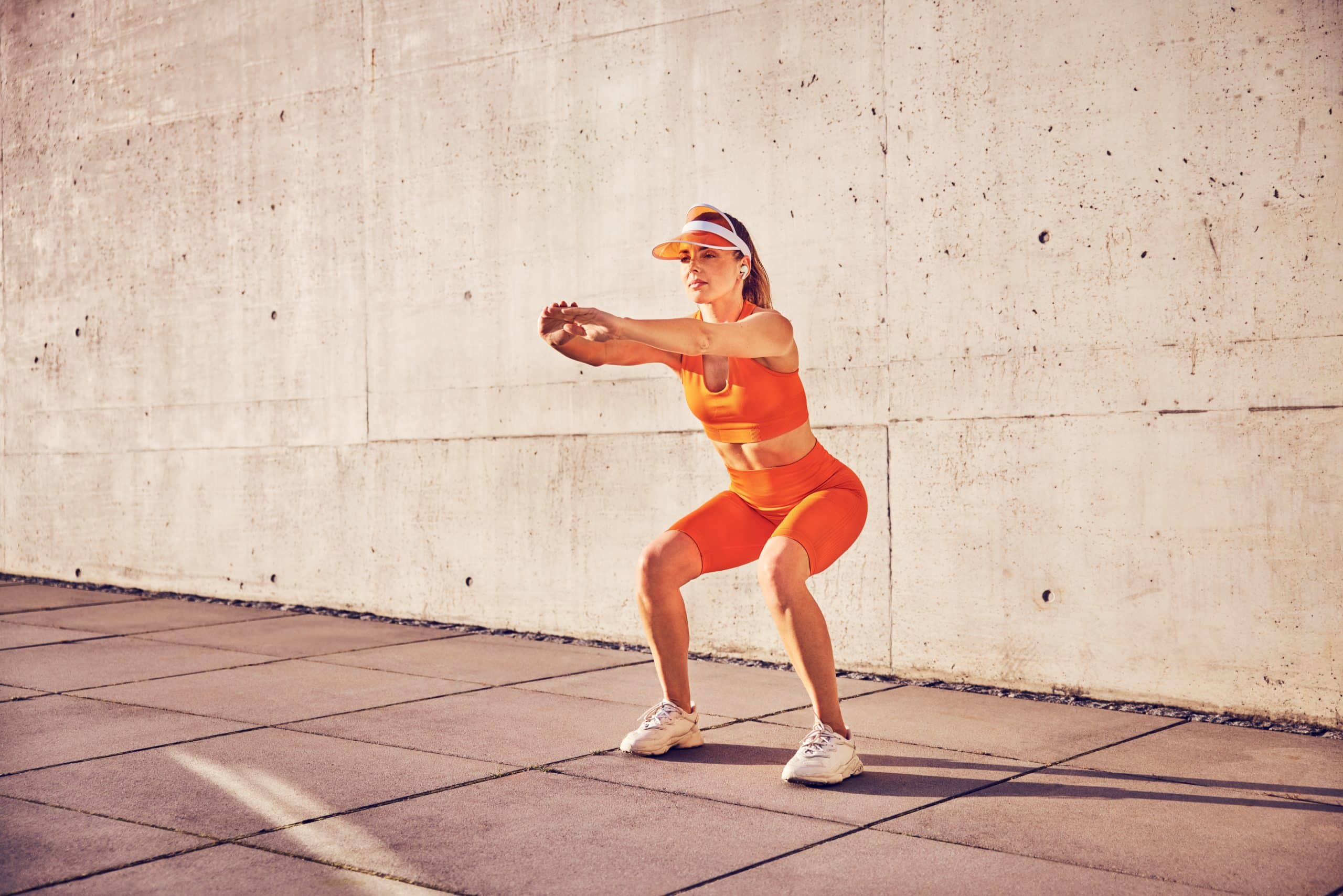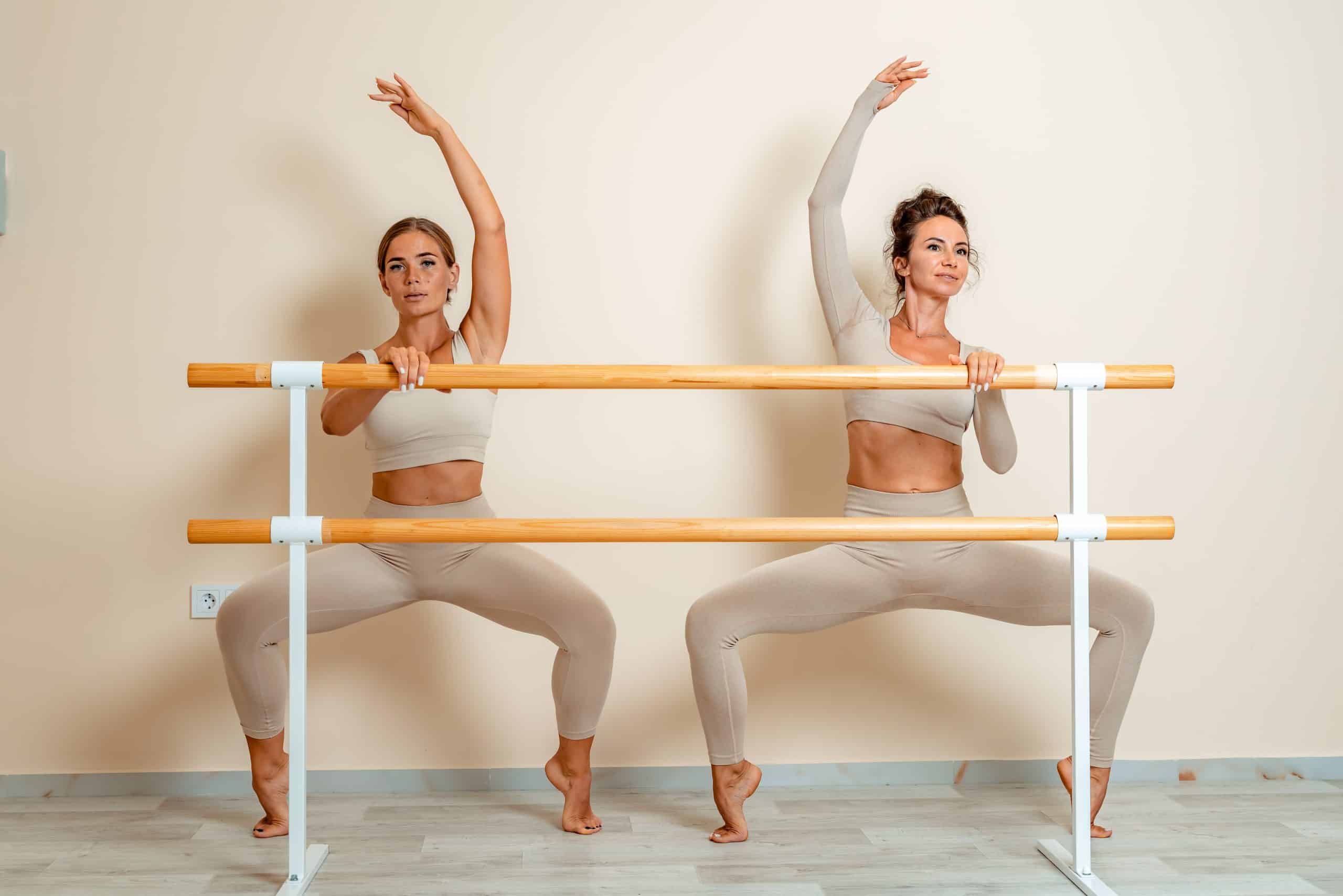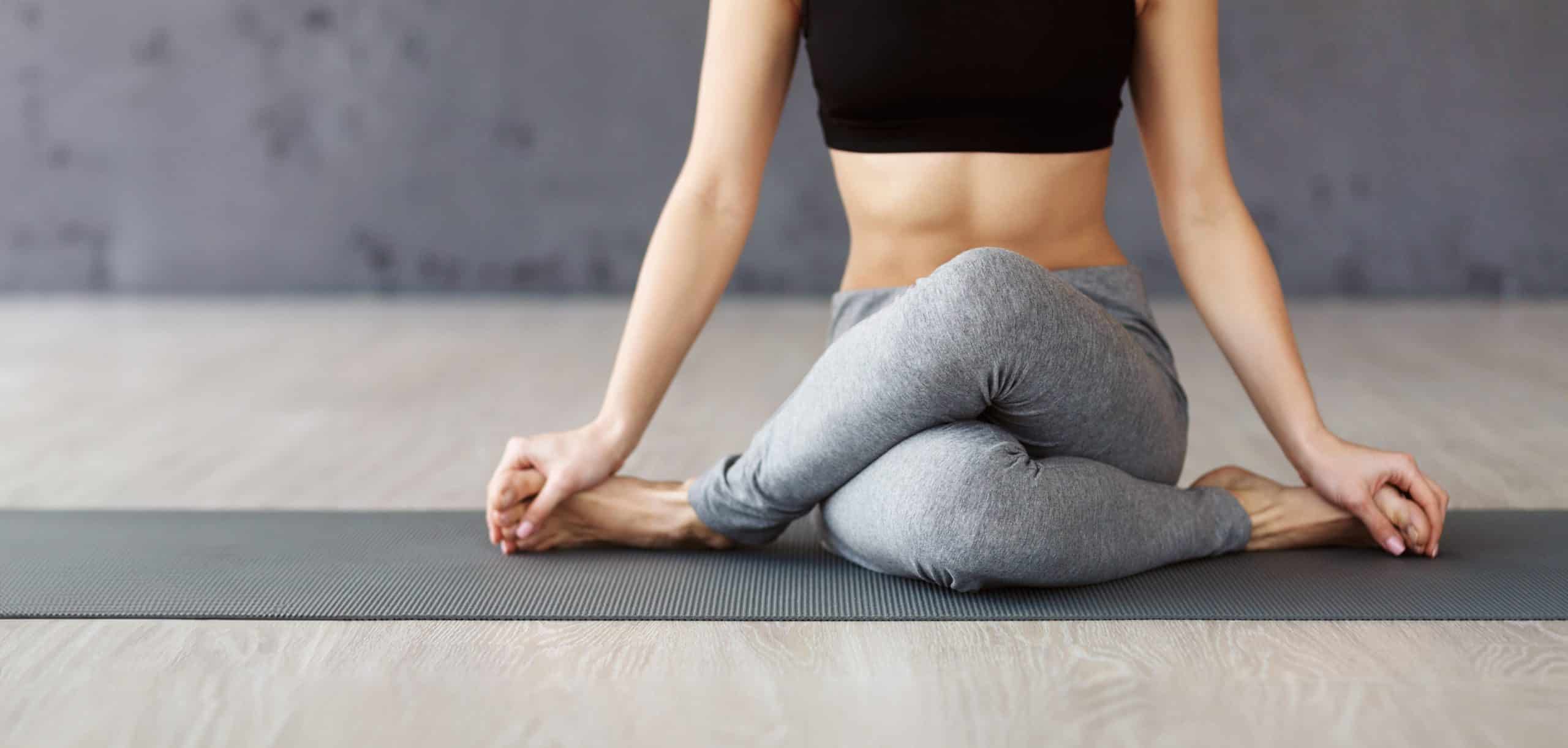Pelvic floor muscles, or pelvic diaphragm, are a group of muscles that form a “corset” around the lower abdomen and hips. These muscles play an important role in supporting your bladder, uterus (if you have one), rectum and bowel. They also help to stabilize your pelvis and increase core stability.
In this article, we will go over the best pilates exercises for pelvic floor muscles.
What Are The Causes Of Weak Pelvic Floor Muscles?
Weak pelvic floor muscles can be caused by numerous factors, such as pregnancy and childbirth. For those who want to strengthen their pelvic floor muscles, there are several exercises available.
Causes of weak pelvic floor muscles, including:
Pregnancy And Childbirth
One of the most common causes of weak pelvic floor muscles is pregnancy and childbirth (10). During pregnancy, a woman’s body goes through many changes in order to support the growing baby inside them. These include abdominal enlargement, breast enlargement and weight gain (5).
All these changes can place additional stress on the back, hips and pelvis. It also places pressure on the vagina which can damage blood vessels and nerves at delivery. Furthermore, during delivery babies exert pressure against your bladder which can lead to loss of urine control.
Surgery
Other causes of weak pelvic floor muscles include surgery, especially surgeries on the abdomen and pelvis (6). Some examples of abdominal surgeries that may cause this is a hysterectomy, Cesarean section or gallbladder removal. In most cases, these types of surgeries can weaken the muscles in your rectum and vagina which support the uterus, bladder and bowel.
Injury
Another common cause of weakened pelvic floor muscles is injury from an accident or sports activities (4). This can result in a curve in the lower back causing a tilted pelvis as well as loss of tissue elasticity which makes it difficult to hold up organ prolapse. The two most commonly affected organs during this type of injury are the bladder and the uterus.
Age
As you age, your risk of developing weak pelvic floor muscles increases (2). This is due to muscles weakened by childbirth and aging-related changes in your body. Examples include the weakening of your bones, which can cause difficulty with movement; decreased estrogen levels that can lead to vaginal dryness; urinary incontinence; constipation; and loss of bladder control (fecal incontinence).
Weak pelvic floor muscles are also associated with conditions like arthritis, multiple sclerosis, Parkinson’s disease, and spinal cord injuries.
Prolonged Sitting/Standing
A final common cause of weak pelvic floor muscle is prolonged sitting or being on your feet for long periods of time without a break from one position to another. The more you sit or stand without moving around, the more your muscles are required to hold up your organs and keep you stable. This can be especially dangerous if you work a desk job where you sit for hours without getting up.
Read More: Pelvic Floor Exercises For Pregnancy: 6 Safe Exercises To Get Rid Of Aches
What Are The Signs Of Weak Pelvic Floor Muscles?
These are attached to your pubic bone and stretch down into your pelvic bones. They support organs such as your bladder and uterus (9). Due to their location, we often don’t think about them until there is a problem. Some of the signs that your pelvic floor muscles may be weak include (7):
- Stress Incontinence
- Frequent Urination
- Pelvic Pain
If any of these sound familiar, you may have a weakened pelvic floor muscle. This can be easily checked by stopping urination mid stream. If you are able to do so without interruption then this means that your muscles are strong enough. However if it is difficult for you to stop urination in its tracks, or if you find yourself having an urge to go even when nothing will come out, then this could indicate weak muscles.
Pelvic Floor Exercises
If weak pelvic floor muscles is something that concerns you, there are several exercises available to strengthen and tone these muscles. It’s suggested to check with a doctor or physical therapist before starting any exercise programs. Your doctor may also want to perform an exam in order to observe how well your pelvic floor muscles can contract and relax as well as determine which exercises would work best for you.
Here are some examples of such exercises:
Kegels
These exercises involve tightening and releasing your pelvic floor muscles — the same muscles you use to stop the flow of urine (3). To do a Kegel exercise, tighten your muscles for 3 seconds and then relax them for 3 seconds while continuing with a regular breathing pattern.
You should be able to feel these contractions when they’re done correctly. These exercises can be repeated multiple times during the day, but it’s important not to overdo them since this can worsen urinary incontinence issues if done incorrectly.
Your doctor or physical therapist may also have you add weight through a special device that’s inserted into your vagina or place pressure on your abdomen by having you cough after each rep, so finding the right exercise program for you is vital to success in strengthening your pelvic floor muscles.
Dropping pounds by the dozens without putting yourself through the wringer is everyone’s weight loss pipe dream. But what if we told you that the BetterMe app can make that happen? Keep yourself in prime shape with our fat-blasting workouts, delicious budget-sparing recipes, and body-transforming challenges with our app!
Pilates Exercises For Pelvic Floor Muscles
Pilates is a physical fitness system developed by Joseph Pilates in the early 20th century that focuses on developing both strength and flexibility (8). It can be done either with specialized equipment or without any equipment at all using bodyweight for resistance. A series of exercises called “the mat work” comprises the foundation of many Pilates workouts – these exercises focus on strengthening specific muscle groups while improving balance and flexibility.
Some pilates exercises for strengthening the pelvic floor muscles include:
- Pelvic tilts
- Scissors
- Bridging
- Lunges
- Pelvic Tilts
Pelvic tilts are a great way to begin strengthening your pelvic floor muscles. Always remember to keep the abdominals engaged, back straight and hips slightly elevated. Pelvic tilts can be completed by lying on your back with knees bent and feet flat on the floor.
- Get into the starting position of your choice
- Tighten your abdominals, exhale and pull your belly button toward your spine as you flatten out your lower back against the floor.
- Inhale as you tilt your pelvis so that your tailbone is slightly raised from the mat.
- Hold this position for three seconds then release as you inhale fully back into the starting position.
- Repeat 10 times, however do not overdo it as pelvic exercises should not cause pain.
Pelvic tilts are easy for most women to master, however some more advanced exercises can help strengthen your pelvic floor muscles even more effectively.
Scissors
Scissors are an excellent exercise for women of all fitness levels. If you have never done a pilates exercise before, this is a great starting point as your pelvic floor muscles will not be too tired to complete the movement with ease.
To do this exercise:
- Lie on your back and bend your knees at a 90° angle placing your feet flat on the mat. You can place a pillow under your lower back if needed as long as it is comfortable and does not cause any excess strain.
- Engage your abdominals as you lift both feet off of the mat then exhale slowly bringing one knee into the chest while keeping both shoulders on the ground firmly.
- Inhale lengthening out that leg so that both legs are fully extended away from the body, then exhale pulling both knees into your chest simultaneously. Keep repeating this action.
- Do 10 repetitions on each side before switching to the other leg.
Scissors are a very beneficial pilates exercise for strengthening the pelvic floor muscles as you will need to use them every time you pull one knee into your chest and lengthen out that same leg while keeping both shoulders on the floor at all times.
Bridging
Bridging is another pilates exercise to strengthen pelvic floor muscles.
To do a bridge:
- Lie on your back with feet flat on the mat, knees bent and engage your thighs as you tighten your abdominals.
- Exhale as you lift up both shoulders and hips off of the mat until shoulders are in line with your hips.
- Keep abs engaged and inhale fully back to the starting position relieving all pressure off of the spine. Repeat this movement 10 times before switching to the other side completing 10 repetitions for each side.
Read More: How To Relax Pelvic Floor Muscles: 5 Ways To Beat Incontinence And Improve Muscle Strength
Lunges
Lunges are an excellent pilates exercise for pelvic floor strength, however they can be started by using a chair or wall for balance if needed. For beginners it may be best to use the wall or chair for support until you feel comfortable and stable completing the movement independently.
To do a lunge:
- Stand with feet hip width apart and engage abdominals as you lift up through the spine.
- Breathe out fully then exhale fully as you bend both knees into a lunge position, making sure to keep both hips facing forward and each knee tracking over each ankle.
- Inhale as you come back to standing bringing your arms above your head for added resistance if desired.
- Repeat 10 times on each leg before switching to complete 10 repetitions total.
As with all pilates exercises for pelvic floor strength it is important to remember not to pull on your neck or create too much tension in the neck area when lifting up through the spine. It is always best practice to engage your core muscles to achieve an overall body workout (1). Breathe in slowly through the nose and exhale fully through the mouth when performing any pilates exercise, including pelvic floor exercises.
The Bottom Line
It is never too late or early to start strengthening your pelvic floor muscles to improve your overall health. Incorporating these easy pilates exercises into your regular fitness routine will help you not only strengthen the area but prevent potential future problems down the road.
DISCLAIMER:
This article is intended for general informational purposes only and does not address individual circumstances. It is not a substitute for professional advice or help and should not be relied on to make decisions of any kind. Any action you take upon the information presented in this article is strictly at your own risk and responsibility!
SOURCES:
- How to Engage Your Core: 7 Core Muscle Groups – 2021 (2021, masterclass.com)
- INCREASING AGE IS A RISK FACTOR FOR DECREASED POSTPARTUM PELVIC FLOOR STRENGTH – (2018, ncbi.nlm.nih.gov)
- Kegel exercises – self-care (2021, medlineplus.gov)
- Pelvic Floor Dysfunction (n.d., physio-pedia.com)
- Physiological Changes in Pregnancy (n.d., physio-pedia.com)
- Prevalence and Trends of Symptomatic Pelvic Floor Disorders… : Obstetrics & Gynecology (2004, journals.lww.com)
- Signs of a pelvic floor problem · The pelvic floor · Pelvic Floor First (n.d., pelvicfloorfirst.org)
- The 100-year history of Pilates: from niche workout to global fitness phenomenon (2019, vogue.com.au)
- The Pelvic Floor – Structure – Function – Muscles (n.d., teachmeanatomy.info)
- What you should know about your pelvic floor: pre-pregnancy, during pregnancy and after giving birth (2017, health.qld.gov.au)





















